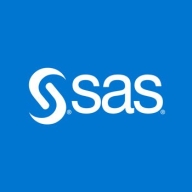

Domo and SAS Data Management compete in the data management category. Domo seems to have the upper hand for users seeking quick insights and ease of use, whereas SAS Data Management is preferred by those requiring comprehensive data control and advanced analytics capabilities.
Features: Domo provides fast dashboard creation, a user-friendly interface, and strong ETL capabilities with numerous connectors across diverse data sources. SAS Data Management excels in data integration and quality tools, offering advanced manipulation and analytics capabilities suited for detailed data analysis and customization.
Room for Improvement: Domo could enhance its data management and integration capabilities, visualization options, and handling of large data sets. SAS Data Management needs user interface updates, faster deployment processes, improved cloud integration, and better affordability.
Ease of Deployment and Customer Service: Domo offers flexible cloud deployment options but receives mixed customer service reviews, with some noting responsiveness and others finding it insufficient. SAS Data Management primarily operates on-premise, requiring technical setups, and lacks flexible deployment options, with customer service also needing improvement.
Pricing and ROI: Domo is considered expensive, with pricing subject to negotiation; however, its broad features justify the cost, offering quick adaptation and deployment. SAS Data Management is also costly, reflecting its extensive functionalities. Both tools deliver significant ROI, with Domo offering a faster return in some business scenarios.
If you're actually using Domo at a very limited case and you're being charged $20,000, we've seen ROI there, but once it goes really high, you really need to check your metrics and check your profit.
They were quite professional and in around three to five working days, they had identified where they suspected there was an issue and I was able to fix it.
It's very easy to get technical support from Domo.
Support-wise, they are good.
The support for SAS in Brazil is not the best one, but the support in Sweden is really good, as they visit the company and work to solve the issues.
The fact that you're able to easily identify the pipelines or flows that have errors, and it notifies you when you're building a pipeline where you can run previews and tell where to fix issues, is helpful.
When fetching files larger than 100 MB from SFTP or any other portal, Domo becomes slow due to the heavy file size.
Sigma, which is written for Snowflake, scales more easily than Domo.
In recent years, I haven't had such cases. It's quite stable and I don't have any reservations on its stability.
In terms of overall stability of the platform, it's very stable.
During that time, we faced issues from the project side as Domo was not visible in our portal.
End users require a license to run their own reports and dashboards, which are fairly expensive.
Some technical aspects such as Beast Mode calculation could be improved in Domo, as it would provide more clarity and help in giving insights to clients or customer business team requirements.
One of the areas where we've had frustrations with Domo is the aesthetics. The aesthetics are quite limited compared to other BI tools such as Tableau and Power BI.
There is significant room for improvement, especially with regard to using a hybrid approach that involves both CAS and persistent storage.
Domo's pricing is high compared to other BI tools, and it is costly.
For long-time users, it can become expensive, but the trade-off is access to the entire platform instead of licensing different components separately.
They quoted approximately one dollar per KB.
From my experience, SAS Data Management is an expensive tool.
App Studio is valuable because it allows all the customization we needed; we can decode it, with the view and grid which are all I need, drill-downs, and everything can be done the way I need it.
I have been using it for four years and have been able to extract the information I need from it.
The most valuable feature of Domo is the fact that you can connect multiple inputs and you don't have to have a data warehouse.
SAS Data Management stands out because of its data standardization, transformation, and verification capabilities.
The best features I appreciate about SAS Data Management tool are that it's easy to create the flows and schedule data, and the tables are not too big, making it easy to control the ETL process, including user access which is also easy to manage in SAS.
| Product | Market Share (%) |
|---|---|
| Domo | 0.7% |
| SAS Data Management | 0.9% |
| Other | 98.4% |


| Company Size | Count |
|---|---|
| Small Business | 16 |
| Midsize Enterprise | 11 |
| Large Enterprise | 20 |
| Company Size | Count |
|---|---|
| Small Business | 7 |
| Midsize Enterprise | 1 |
| Large Enterprise | 8 |
Domo is a cloud-based, mobile-first BI platform that helps companies drive more value from their data by helping organizations better integrate, interpret and use data to drive timely decision making and action across the business. The Domo platform enhances existing data warehouse and BI tools and allows users to build custom apps, automate data pipelines, and make data science accessible for anyone through automated insights that can be shared with internal or external stakeholders.
Find more information on The Business Cloud Here.
Every decision, every business move, every successful customer interaction - they all come down to high-quality, well-integrated data. If you don't have it, you don't win. SAS Data Management is an industry-leading solution built on a data quality platform that helps you improve, integrate and govern your data.
We monitor all Data Integration reviews to prevent fraudulent reviews and keep review quality high. We do not post reviews by company employees or direct competitors. We validate each review for authenticity via cross-reference with LinkedIn, and personal follow-up with the reviewer when necessary.